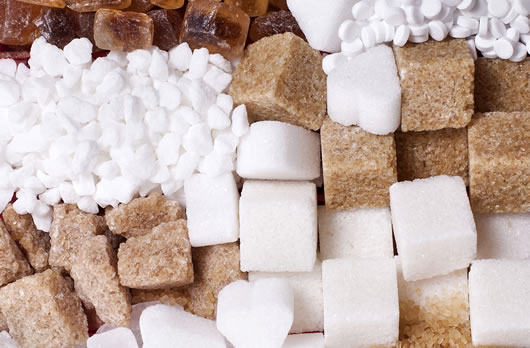Last week, Coca-Cola, PepsiCo and Dr. Pepper Snapper all revealed their second quarter earnings report. Coca-Cola’s soda sales were flat in North America and its revenue fell 1.4 percent, despite a sales volume increase in other parts of the world. PepsiCo suffered a two percent fall in both profit and soda sales volume. Dr. Pepper Snapper reported an increase of over one percent of revenue and its soda sales volume climbed two percent. These numbers reflected consumers’ attitudes on different types of sweeteners.
For the decline in profits, Coke and Pepsi both blamed the weak market for diet soda. The artificial sweeteners in diet soda were supposed to win over consumers who are concerned over the negative impact of high sugar intake. But the safety and quality of artificial sweeteners became a stronger concern, causing a continuous and accelerated fall in diet soda sales. As the new report revealed, the sales volume for regular Coke actually rose one percent in North America, while Diet Coke sales dropped further.
Aspartame is the artificial sweetener used in most diet sodas for Coke, Pepsi and Dr. Pepper brands. It has very little nutrient value, and thus is nonfattening. And it is much sweeter than sugar gram for gram, which is interesting because the two amino acids used in forming this substance do not taste sweet. Individuals with phenylketonuria, a genetically transmitted disease, are unable to break down one of the two amino acids in aspartame and thus must avoid it. Explicit warnings are placed on such products.
FDA considers aspartame to be safe for the vast majority of consumers, and approved the sweetener in 1981. Although a few cases of adverse side effects have been attributed to aspartame, exhaustive reviews have failed to show an unequivocal and direct connection between the symptoms and the sweetener. Coke ran a national print ad, “The safety of aspartame is supported by more than 200 studies over the last 40 years,” in the summer 2013. The continuous declining in diet soda sales shows it is an uphill battle to assure consumers of the safety of this artificial “chemical.”
Dr. Pepper Snapper’s soda sales volume increase was largely due to the brands Canada Dry, Peñafiel (in Mexico) and Schweppes. The latter two offer carbonated water in addition to sugary drinks. All three brands do not have artificial sweeteners, but use sugar or high fructose corn syrup instead.
For low and mid calorie soda, all three companies are working hard. Dr. Pepper Snapper introduced ten lineups in 2011 which use only small quantities of high-fructose corn syrup, and from March this year started to test soda that has 60 calories per can with only the natural sweetener stevia and sugar. Coke and Pepsi both failed before with non-natural sweeteners— “C2” from Coke in 2011 and “Pepsi Edge” from Pepsi in 2005. Coke released “Coca-Cola Life,” which contained stevia in Argentina and Chile last year, and will market it in UK this autumn. Pepsi Next does not use aspartame and has 30 percent less sugar than regular Pepsi.
Stevia is rising start as a natural sweetener. This non-caloric sweetener is found in the leaves of Stevia rebaudian (one species in the genus Stevia in the sunflower family). Native to subtropical and tropical regions from western North America to South America, local populations have used these sweet leaves for centuries. It has a slower onset and longer duration in comparison to sugar. With negligible effects on blood glucose, it is attractive to people on carbohydrate-controlled diets. Stevia causes a bitter or licorice-like aftertaste at high concentrations and therefore is often used together with sugar.
Sugar seems to be the devil people know. But how much is really known? It became a part of the human diet after the domestication of the sugarcane in 8,000 BC. “Sugars” include honey, sucrose (table sugar), high-fructose corn syrup, fruit juice concentrate and agave nectar. There is a direct relation between intake of dietary sugars and the dental caries (decay and crumbling of a tooth or bone) across the life span.
Other than these, not much can be agreed on regarding the role of sugar and its recommended intake. The linkage between high sugar intake and obesity and other health complications is inconclusive, according to the Institute of Food Technologists (IFT), the world’s largest food science organization. At IFT’s annual meeting in New Orleans at the end of June, a discussion panel stated that government and health organizations’ recommendations for sugar intake have varied significantly based on different studies and different methodologies to evaluate those studies.
While sugar intakes in the US have decreased over the past 10-15 years, obesity has continued to increase. The North American branch of the International Life Sciences Institute (ILSI), a nonprofit organization in Washington, DC, has undertaken a project to better understand the interplay between sugar in the diet and health outcomes and to identify research gaps.
Some of the questions ILSI plans to address with respect to sugar and health are: What is the long-term effect of a reduction in sugar intake on body weight and/or fatness in overweight/obese adults and in children? Do dietary sugars impact how the body accumulates fat differently than other energy-yielding nutrients? What is the effect of sugar intake on satiety and hunger mechanisms? What are the mechanisms in the brain linking sugar consumption to a reward system/insulin and glycemic levels (“addictive behavior” or “sugar addiction”)?
These answers will aid the emergence of an evidence-based and more meaningful sugar intake recommendation. Still beverages–non-carbonated drinks such as energy drinks, fruit juice and flavored water–have seen a quick rise in market shares since they are deemed healthier than the carbonated sugar bombs. But it is not unusual for natural fruit juice, with no sugar added, to have as much sugar and calories as traditional Coke at the same volume. A deeper and more comprehensive understanding of sugar will help a concerned and confused public, and impact the future of all sugary drink industries.
By Tina Zhang
Sources:
The American Journal of Clinical Nutrition

